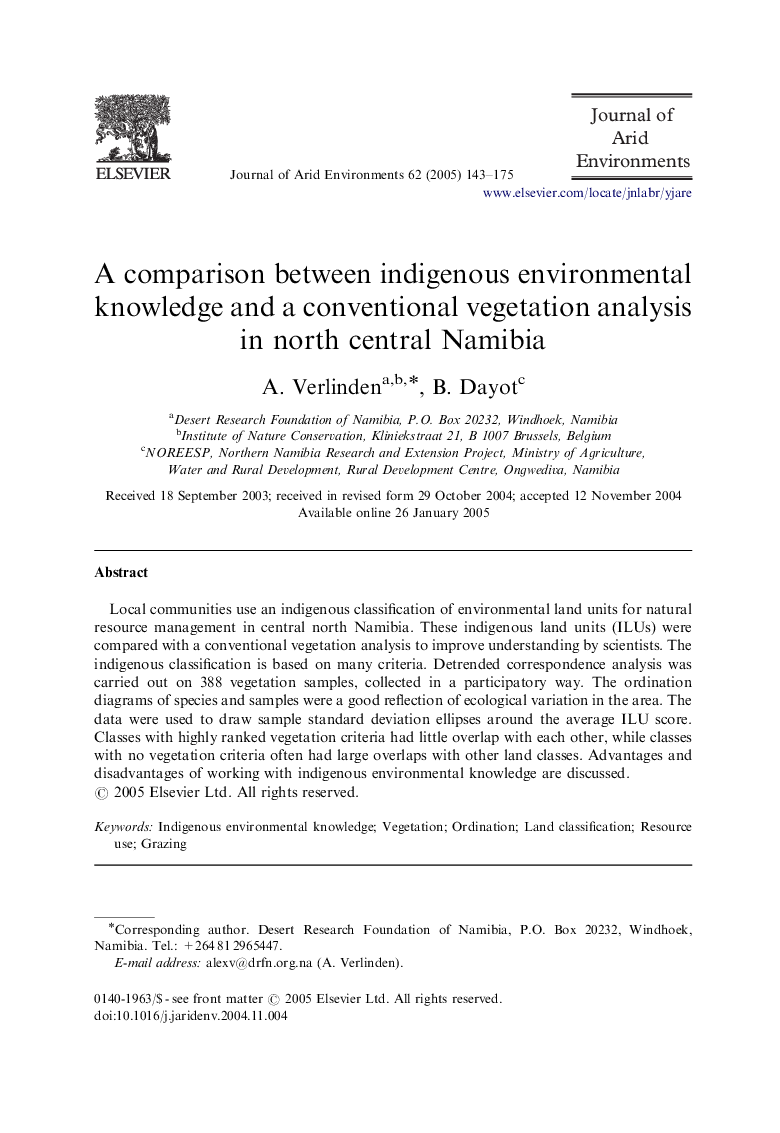| Article ID | Journal | Published Year | Pages | File Type |
|---|---|---|---|---|
| 9447870 | Journal of Arid Environments | 2005 | 33 Pages |
Abstract
Local communities use an indigenous classification of environmental land units for natural resource management in central north Namibia. These indigenous land units (ILUs) were compared with a conventional vegetation analysis to improve understanding by scientists. The indigenous classification is based on many criteria. Detrended correspondence analysis was carried out on 388 vegetation samples, collected in a participatory way. The ordination diagrams of species and samples were a good reflection of ecological variation in the area. The data were used to draw sample standard deviation ellipses around the average ILU score. Classes with highly ranked vegetation criteria had little overlap with each other, while classes with no vegetation criteria often had large overlaps with other land classes. Advantages and disadvantages of working with indigenous environmental knowledge are discussed.
Related Topics
Physical Sciences and Engineering
Earth and Planetary Sciences
Earth-Surface Processes
Authors
A. Verlinden, B. Dayot,
